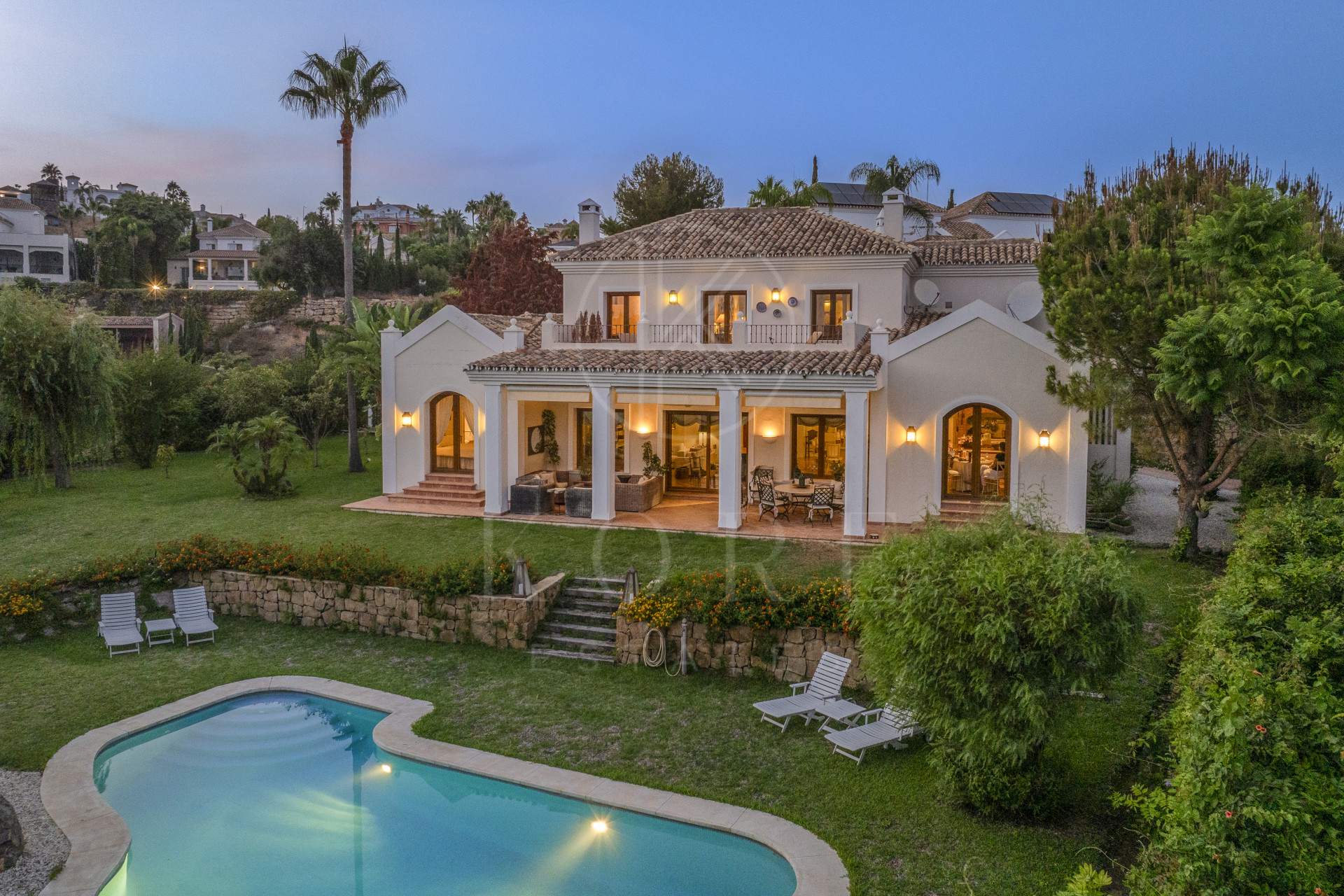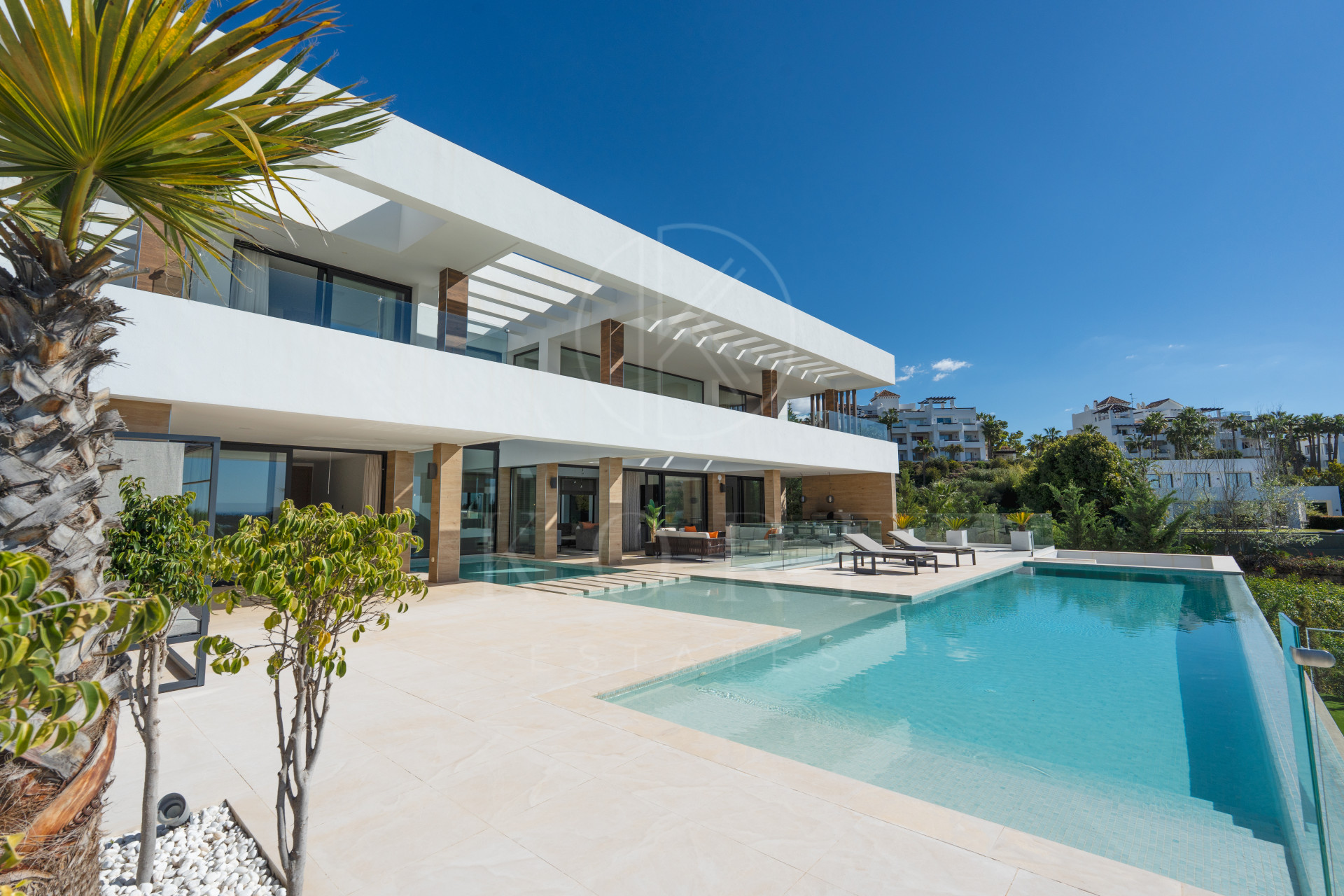Marbella offers a far-reaching architectural spectrum, from whitewashed fincas with terracotta-tiled roofs to contemporary villas that push the boundaries of design. For discerning buyers, the decision between a traditional home and a modern residence is not only one of aesthetics but also lifestyle, functionality and long-term value.
Each style has its merits. The key lies in understanding how these differing approaches align with personal preferences and practical considerations.
Traditional style: enduring design
Traditional homes in Marbella are often based on Andalucian architectural principles with low-pitched tiled roofs, internal courtyards, arched doorways and timber detailing. Built with natural materials and orientated to suit the climate, these properties have a reassuring sense of permanence. Their layered textures, shaded patios and mature gardens lend a calm, lived-in quality that can’t easily be replicated in newer builds.
Many can be found in established hillside areas such as La Zagaleta and El Madroñal, where plots are expansive and the surroundings peaceful. These homes often reflect a slower, more rooted way of living, offering privacy and space while remaining within reach of Marbella’s coastal amenities.
Internally, traditional properties favour proportion over minimalism. Layouts are more segmented, finishes tend toward craftsmanship and the overall aesthetic leans into a natural palette. For those who value architecture with context and depth, this style can be particularly appealing.
There is also potential from an investment perspective. Homes of this type may offer more generous interior volumes and garden space at a more competitive price per square metre, particularly if light renovation or modernisation is part of the plan. A well-updated traditional home combines character with functionality and can carry strong long-term appeal.

Modern living: considered minimalism and integrated technology
In contrast, modern homes in Marbella are typically defined by geometry, light and energy efficiency. Large-format, floor-to-ceiling windows, pared-back interiors and open-plan spaces form the architectural language. These properties are designed to frame the landscape, often with panoramic views, strong horizontal lines and uninterrupted flow between inside and out.
Materials such as glass, steel and concrete are balanced with natural tones to soften the design. Developers prioritise energy performance, automation and sustainability, with systems that manage climate, lighting and security remotely.
Such homes are well suited to those with an international lifestyle. The ease of maintenance, smart infrastructure and contemporary layout support a way of living that is streamlined yet comfortable. Many are newly constructed and move-in ready, reducing the need for future upgrades.
Popular areas for modern architecture include Nueva Andalucía, Cascada de Camoján and parts of Sierra Blanca, where architectural controls and planning standards allow for clean, contemporary forms.
Finding the right fit
There is no absolute right answer when choosing between these two styles. It comes down to your lifestyle. Some clients are drawn to the history and permanence of traditional homes, particularly when mature gardens and heritage are priorities. Others lean toward the clarity and control that modern properties provide, especially if convenience, automation and light-filled interiors are key requirements.
There are also well-executed hybrids. A number of homes integrate the proportions and textures of traditional Andalucian architecture with the technical standards of modern construction. These properties offer a measured balance of original features preserved or reinterpreted with a more contemporary sensibility.
Beyond aesthetics, the type of property you choose may reflect how long you plan to stay, how often the home will be used and how involved you wish to be in its maintenance. A home used seasonally may benefit from modern systems that allow remote management, while a primary residence might justify the detail and permanence of a traditional structure.

The Marbella context
One of Marbella’s strengths lies in its architectural diversity. Unlike newer resort destinations, the region has a layered development history, where both heritage properties and design-led modern homes coexist within the same market. Planning policy has generally favoured design integrity, meaning that both styles can thrive without compromising on quality or setting.
Market demand reflects this balance. Some buyers are drawn to the clean geometry and turn-key nature of contemporary homes, particularly those relocating from northern European cities. Others continue to seek the authenticity and provenance that traditional villas represent, especially when located in sought-after areas and long-term value retention.
Guidance from Kore Estates
At Kore Estates, we work closely with clients to identify properties that reflect not just taste, but also intention. Whether you’re purchasing a primary residence, a long-term second home, or a strategic investment, our knowledge of Marbella’s property landscape allows us to match clients with homes that suit both their aesthetic sensibilities and their practical needs.
Our portfolio spans a range of architectural styles, each carefully chosen for quality, location and design integrity. We invite you to explore our current collection or speak to a member of our team to begin your property search.
